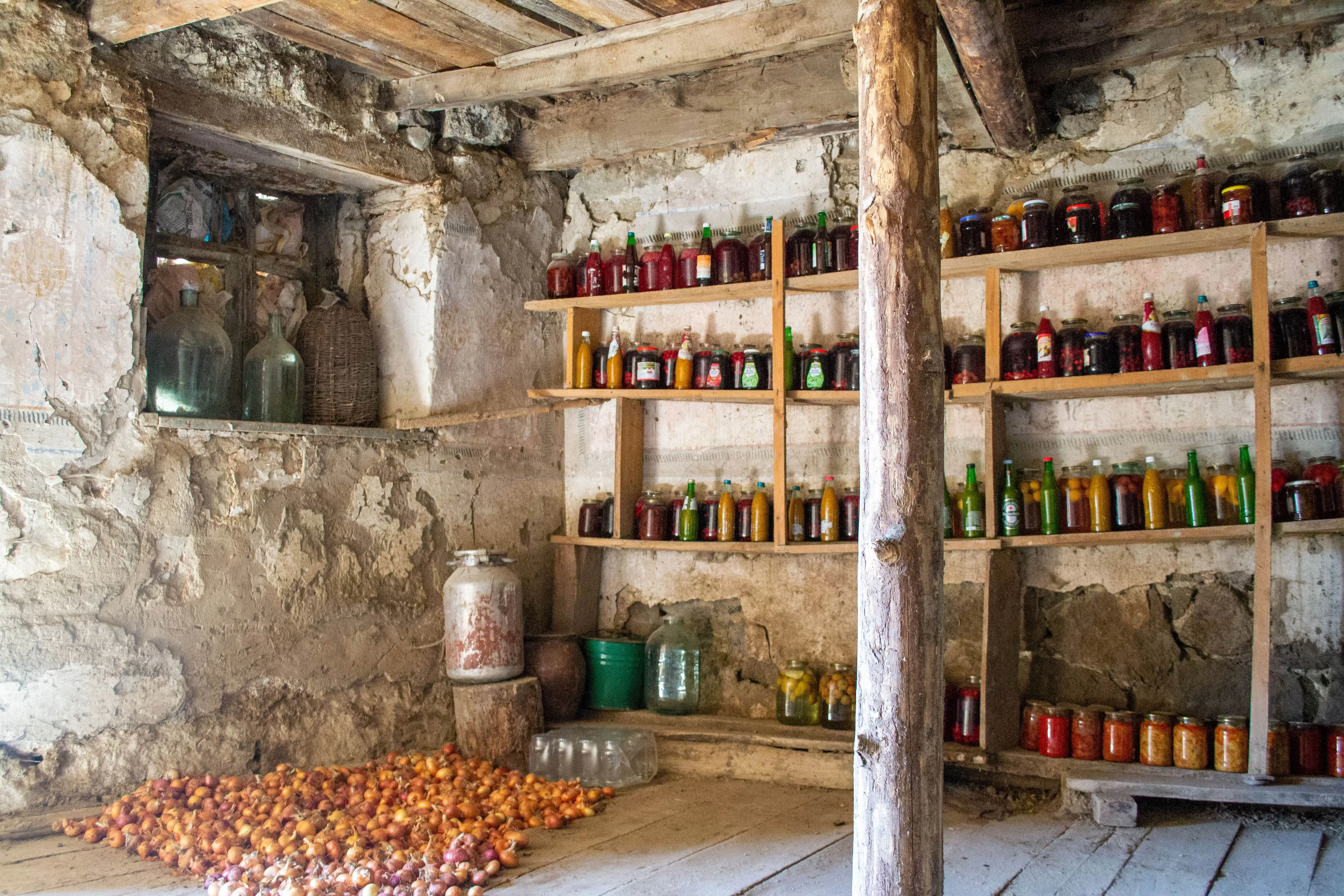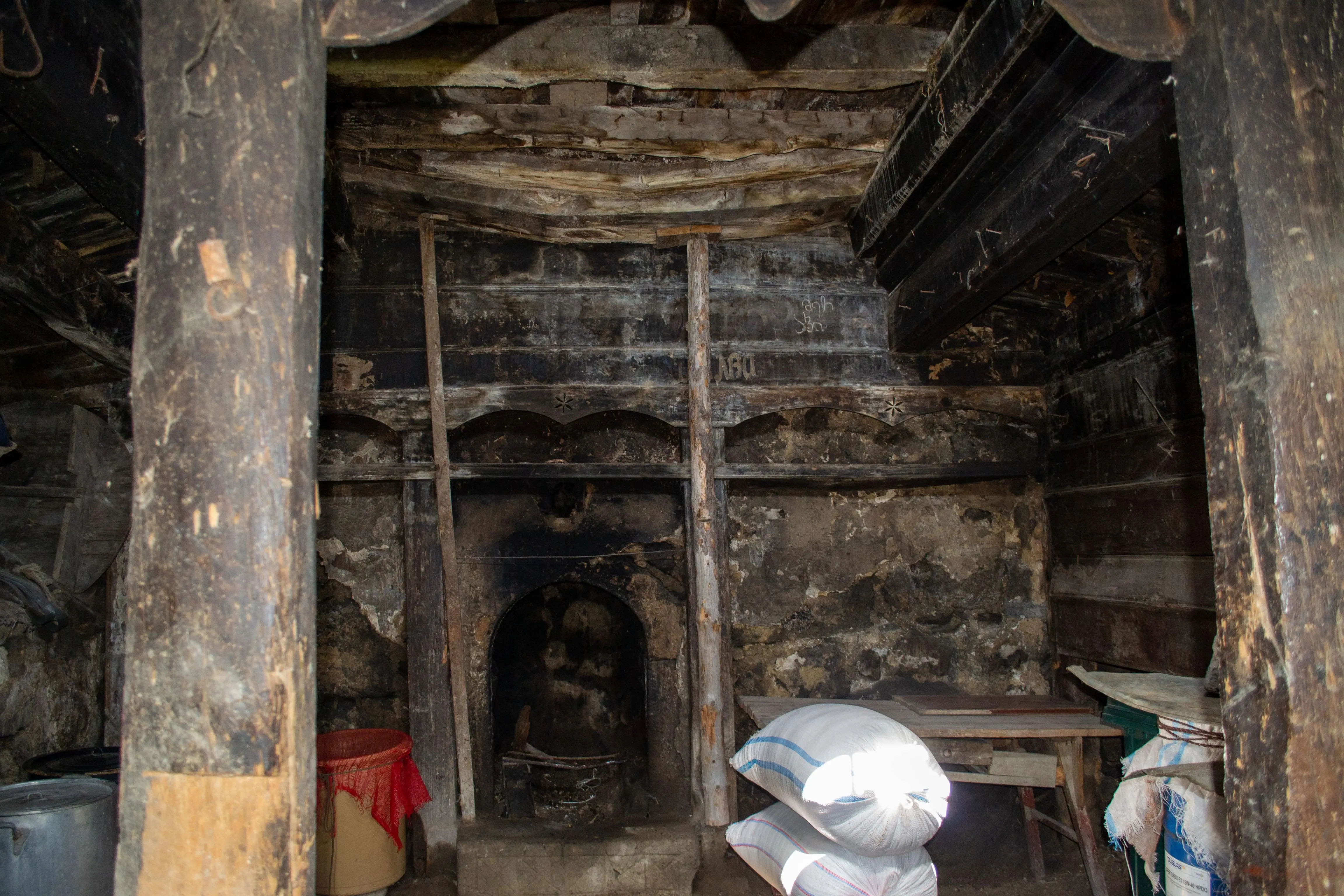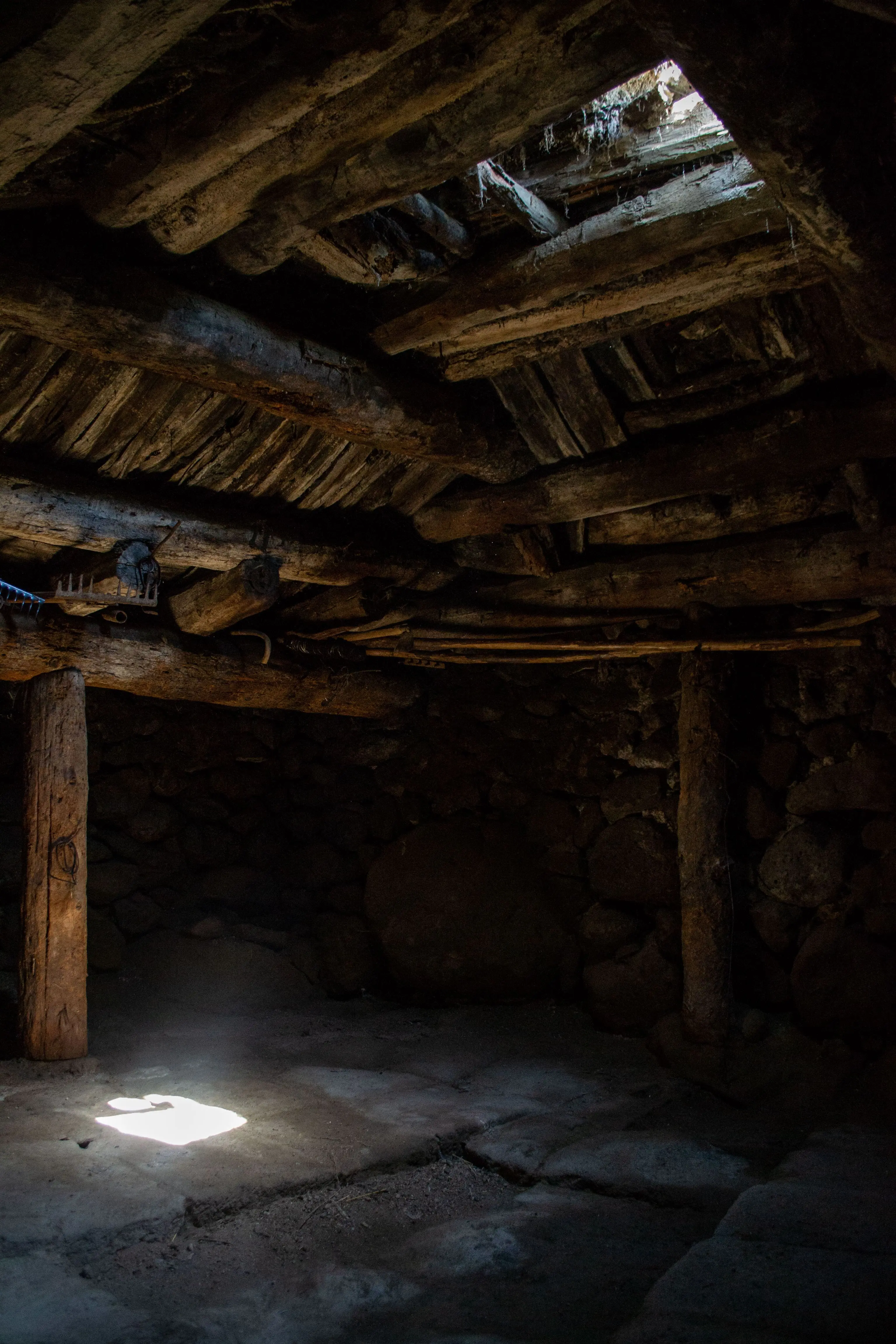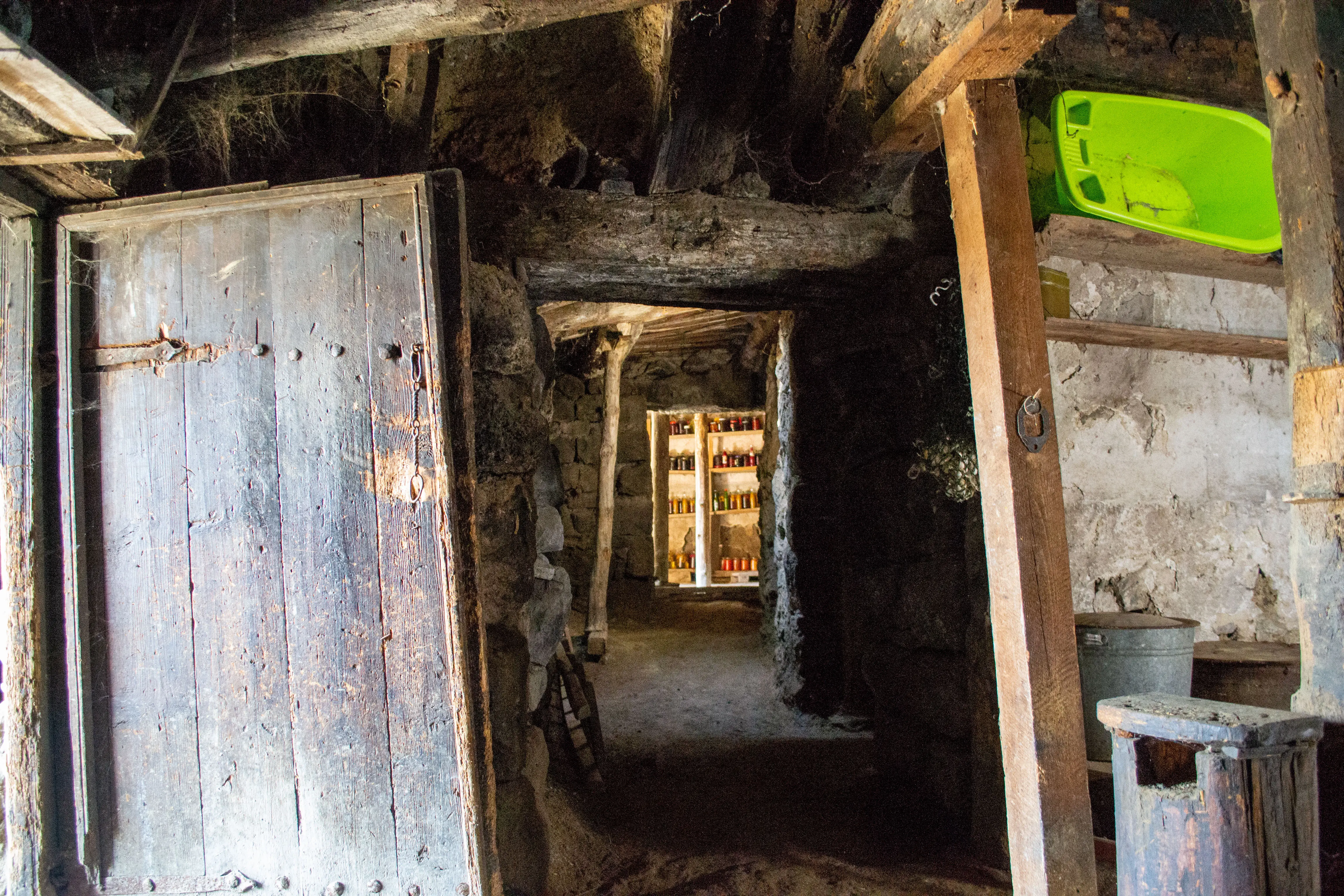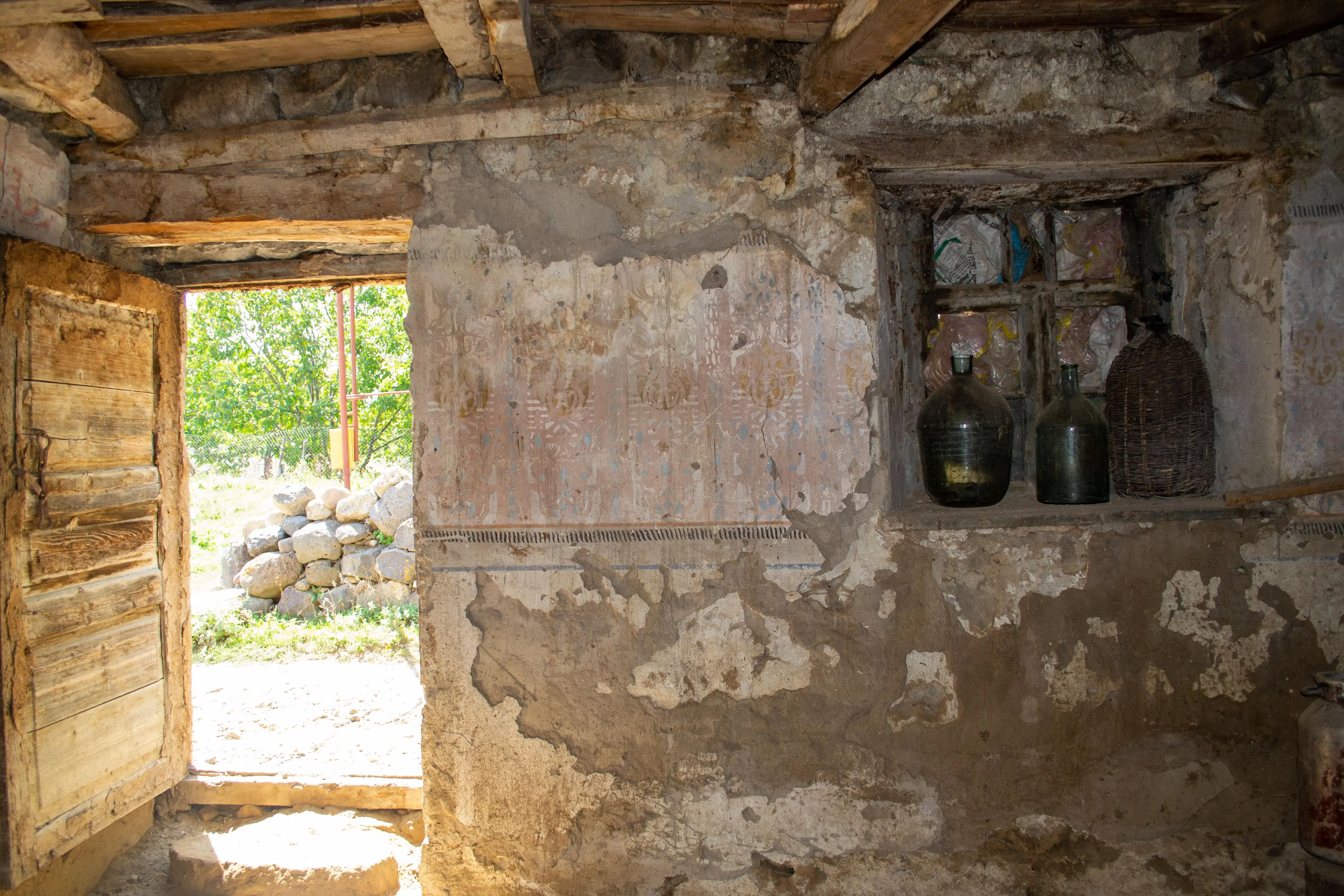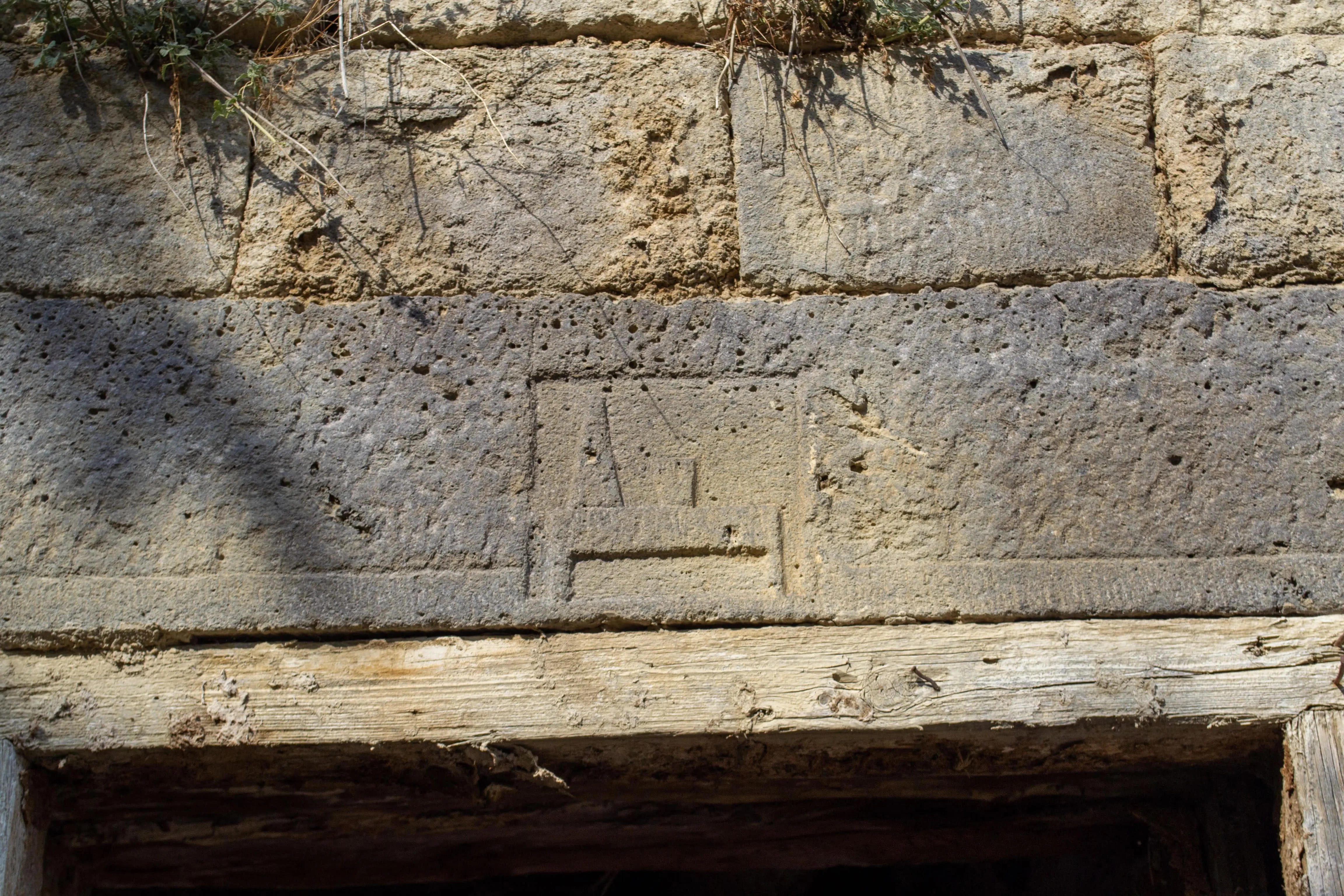Keghoshvili Oda is a Meskhetian Darbazi-like system of six rooms. Interconnected with hallway, the house includes: a Furne (ფურნე)–a kitchen/bakery with a typical Meskhetian oven; an Akhori (ახორი)--a room for livestock; an Oda (ოდა)--a winter living room with an opening located at the point where the roof and wall meets and lights a fireplace; a Marani (მარანი)--a storage room; and a relatively new room addition built in 1935. The lintel and sill of the Furne carry the initials of its constructor, as well as carvings of the dates “1929” and “1973”. The new addition has a separated entrance and window facing a street, with “1935” carved into the keystone of the window arch and an unusual relief of a Supra table carved into the lintel of the door.
The Keghoshvili is an exceptional case in the village–with care and attention evident even in its historical state. Its wide, wooden door, oriented toward the intersection of a dirt road, presents an almost formal presence for a such house types. And while this darbazi no longer houses a family, sees guests, or hosts dinners, it is still actively used for canning, fermentation, and glass storage.
